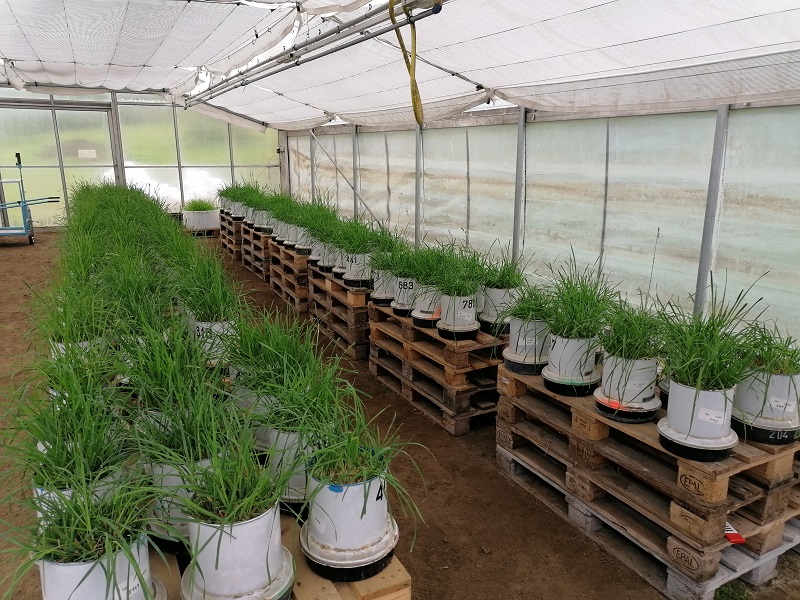The Drought Stress project attempted to find out how pronounced the variety-related differences are in cocksfoot with regard to drought tolerance. Climate change, and the resulting increase in extreme weather events and the shift in precipitation distribution, are increasingly presenting Austrian grassland with major challenges. Since the main root portion of many grass species is located in the upper soil layers, the grass structure of the stand is particularly affected.
In order to counteract this problem, the use of drought-resistant or resilient species is of crucial importance. While the different requirements of grassland species have been well researched and documented, comparatively little is known about variety-related differences. The Drought Stress project attempted to find out how pronounced the variety-related differences in cocksfoot are in terms of drought tolerance. , the drought tolerance of 5 cocksfoot varieties of different European origins was examined under controlled conditions in the polytunnel of the HBLFA feed yield , feed quality and root formation were recorded under three different irrigation levels.
The experiment showed that there were clear differences in biomass between the varieties - both above ground and below ground. In general it can be said that the drought treatments strongly influenced all examined parameters. This shows that in the future greater attention will have to be paid to drought resistance in breeding, but also in testing new varieties. But the drought tolerance of the varieties should also be examined in more detail - under (partially) controlled conditions. Once the test results are available, a differentiated mixture must be created in order to bring the ideal varieties to the right location.






